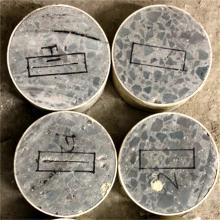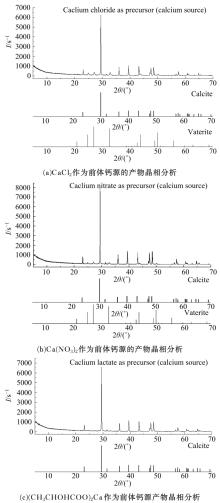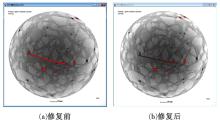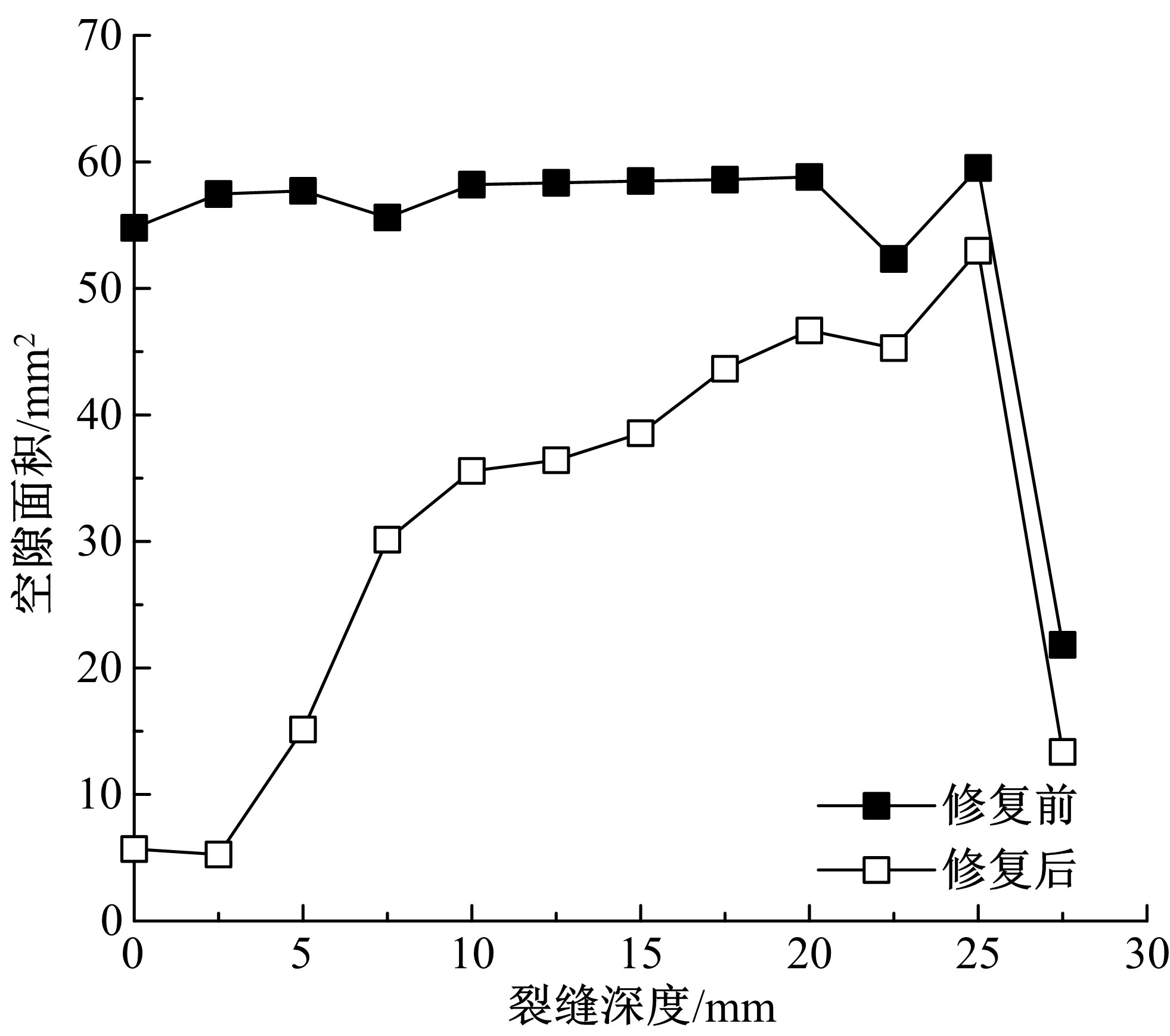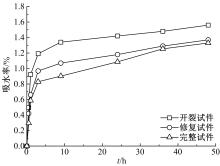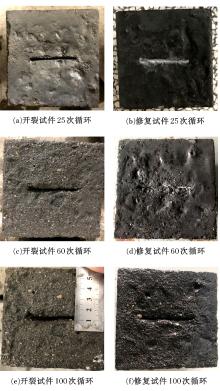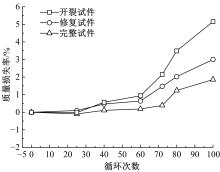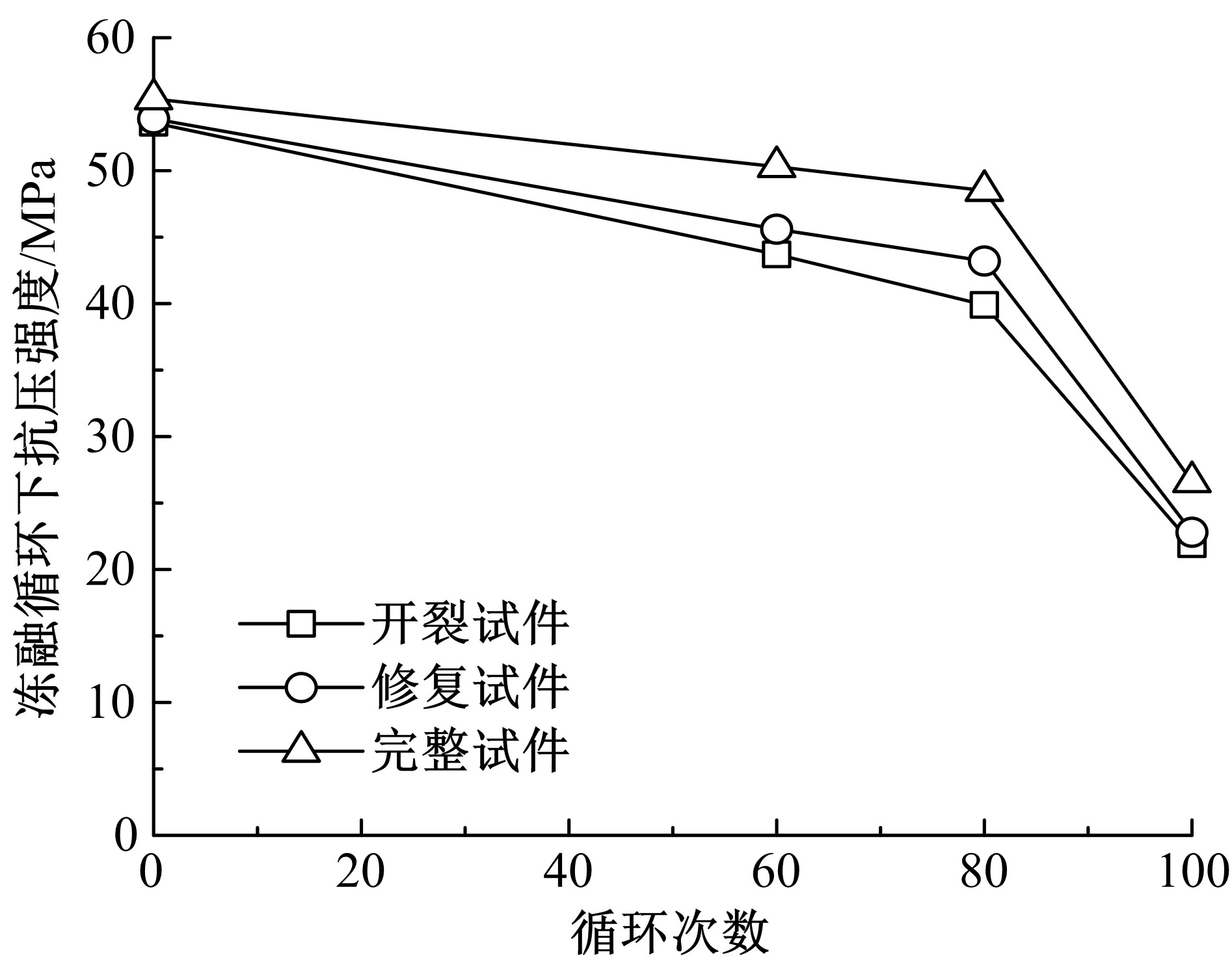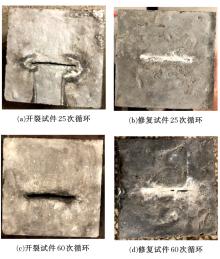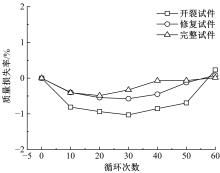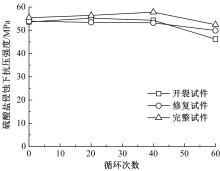Journal of Jilin University(Engineering and Technology Edition) ›› 2020, Vol. 50 ›› Issue (2): 641-647.doi: 10.13229/j.cnki.jdxbgxb20181001
Repair and rejuvenation of cracked concrete by microbiologically⁃induced calcite⁃precipitation
Jie YUAN1( ),Xin CHEN1,2(
),Xin CHEN1,2( ),Hong-lin HE1,Bo YANG1,Xiao-jun ZHU2,3
),Hong-lin HE1,Bo YANG1,Xiao-jun ZHU2,3
- 1.School of Transportation Science and Engineering, Harbin Institute of Technology, Harbin 150090, China
2.State Key Laboratory of Safety and Health for In?service Long Span Bridges, JSTI Group, Nanjing 210019, China
3.College of Civil Engineering and Transportation Engineering, Hohai University, Nanjing 210098, China
CLC Number:
- TU57+8
| 1 | 王铁成, 董春敏, 王菘. 配高强箍筋的T形截面混凝土梁的斜裂缝宽度试验研究[J]. 吉林大学学报: 工学版, 2006, 36(4): 451-455. |
| Wang Tie-cheng, Dong Chun-min, Wang Song. Experimental study on diagonal crack widths of reinforced concrete T-Beams with high strength stirrup[J]. Journal of Jilin University (Engineering and Technology Edition), 2006, 36(4): 451-455. | |
| 2 | 李中华, 巴恒静. 混凝土的抗盐冻性能[J]. 吉林大学学报: 工学版, 2009, 39(4): 926-931. |
| Li Zhong-hua, Ba Heng-jing. Freeze-deicing salt resistance of concrete[J]. Journal of Jilin University (Engineering and Technology Edition), 2009, 39(4): 926-931. | |
| 3 | 宿晓萍, 王清. 复合盐浸-冻融-干湿多因素作用下的混凝土腐蚀破坏[J]. 吉林大学学报: 工学版, 2015, 45(1): 112-120. |
| Su Xiao-ping, Wang Qing. Corrosion damage of concrete under multi-salt soaking, freezing-thawing and dry-wet cycles[J]. Journal of Jilin University (Engineering and Technology Edition), 2015, 45(1): 112-120. | |
| 4 | Belie N D. Application of bacteria in concrete: a critical review[J]. RILEM Technical Letters, 2016(1): 56-61. |
| 5 | Achal V, Mukerjee A, Sudhakara R M. Biogenic treatment improves the durability and remediates the cracks of concrete structures[J]. Construction & Building Materials, 2013, 48(19): 1-5. |
| 6 | 陈歆, 韩依璇, 张国荣, 等. 巴氏生孢八叠球菌用作混凝土裂缝愈合剂的活性研究[J]. 建筑材料学报, 2018, 21(3): 484-490. |
| Chen Xin, Han Yi-xuan, Zhang Guo-rong, et al. Activity investigation of Sporosarcina pasteurii as concrete crack healing agent[J]. Journal of Building Materials, 2018, 21(3): 484-490. | |
| 7 | 贾强, 张鑫, 侯宏涛, 等. 微生物沉积碳酸钙修复混凝土裂缝的现场试验[J]. 建筑材料学报, 2013, 16(4): 667-672. |
| Jia Qiang, Zhang Xin, Hou Hong-tao, et al. Field experiment of crack repair by microbiological precipitation of CaCO3[J]. Journal of Building Materials, 2013, 16(4): 667-672. | |
| 8 | 贾强, 赵程程, 孙增斌. 微生物沉积碳酸钙修复混凝土裂缝抗渗性研究[J]. 应用基础与工程科学学报, 2017, 25(1): 141-148. |
| Jia Qiang, Zhao Cheng-cheng, Sun Zeng-bin. Bearing pressure experimental research of the concrete cracks after bioremedying[J]. Journal of Basic Science and Engineering, 2017, 25(1): 141-148. | |
| 9 | Li W, Dong B, Yang Z, et al. Recent advances in intrinsic self-healing cementitious materials[J/OL]. (2018-03-25). [2019-09-29]. |
| 10 | Alazhari M, Sharma T, Heath A, et al. Application of expanded perlite encapsulated bacteria and growth media for self-healing concrete[J]. Construction and Building Materials, 2018, 160: 610-619. |
| 11 | 李沛豪, 屈文俊, 徐德强, 等. 大理石历史建筑遗产的细菌修复加固[J]. 华南理工大学学报: 自然科学版, 2009, 37(9): 36-41. |
| Li Pei-hao, Qu Wen-jun, Xu De-qiang, et al. Remediation of historic marble architectural heritages by bacterially-induced biomineralization[J]. Journal of South China University of Technology (Natural Science Edition), 2009, 37(9): 36-41. | |
| 12 | 李沛豪, 屈文俊. 细菌诱导碳酸钙沉积修复混凝土裂缝[J]. 土木工程学报, 2010, 43(11): 64-70. |
| Li Pei-hao, Qu Wen-jun. Remediation of concrete cracks by bacterially-induced calcium carbonate deposition[J]. China Civil Engineering Journal, 2010, 43(11): 64-70. | |
| 13 | 钱春香, 罗勉, 潘庆丰, 等. 自修复混凝土中微生物矿化方解石的形成机理[J]. 硅酸盐学报, 2013, 41(5): 620-626. |
| Qian Chun-xiang, Luo Mian, Pan Qing-feng, et al. Mechanism of microbially induced calcite precipitation in self-healing concrete[J]. Journal of the Chinese Ceramic Society, 2013, 41(5): 620-626. | |
| 14 | GB/T 50082—2009. 普通混凝土长期性能与耐久性能试验方法标准[S]. |
| [1] | Qian-hui PU,Jing-wen LIU,Gang-yun ZHAO,Meng YAN,Xiao-bin LI. Theoretical analysis of bearing capacity of concrete eccentric compressive column reinforced by HTRCS [J]. Journal of Jilin University(Engineering and Technology Edition), 2020, 50(2): 606-612. |
| [2] | Miao ZHANG,Yong-jiu QIAN,Fang ZHANG,Shou-qin ZHU. Experimental analysis of spatial force performance of concrete-reinforced stone arch bridge based on enlarged section method [J]. Journal of Jilin University(Engineering and Technology Edition), 2020, 50(1): 210-215. |
| [3] | Zhe WANG,Yi XIE,Peng-fei ZANG,Yao WANG. Energy management strategy of fuel cell bus based on Pontryagin′s minimum principle [J]. Journal of Jilin University(Engineering and Technology Edition), 2020, 50(1): 36-43. |
| [4] | Sheng-tong DI,Chao JIA,Wei-guo QIAO,Kang LI,Kai TONG. Loading rate effect of meso⁃damage characteristics of crumb rubber concrete [J]. Journal of Jilin University(Engineering and Technology Edition), 2019, 49(6): 1900-1910. |
| [5] | Ning⁃hui LIANG,Qing⁃xu MIAO,Xin⁃rong LIU,Ji⁃fei DAI,Zu⁃liang ZHONG. Determination of fracture toughness and softening traction⁃separation law of polypropylene fiber reinforced concrete [J]. Journal of Jilin University(Engineering and Technology Edition), 2019, 49(4): 1144-1152. |
| [6] | Tian⁃lai YU,Hai⁃sheng LI,Wei HUANG,Si⁃jia WANG. Shear strengthening of reinforced concrete beam with prestressed steel wire ropes [J]. Journal of Jilin University(Engineering and Technology Edition), 2019, 49(4): 1134-1143. |
| [7] | SONG Jun, SHI Xue-fei, RUAN Xin. Optimization of thermal parameter identification for mass concrete [J]. Journal of Jilin University(Engineering and Technology Edition), 2018, 48(5): 1418-1425. |
| [8] | DAI Yan, NIE Shao-feng, ZHOU Tian-hua. Finite element analysis of hysteretic behavior of square steel tube confined steel reinforced concrete column steel frame ring beam joint [J]. Journal of Jilin University(Engineering and Technology Edition), 2018, 48(5): 1426-1435. |
| [9] | JI Wen-yu, LI Wang-wang, GUO Min-long, WANG Jue. Experimentation and calculation methods of prestressed RPC-NC composite beam deflection [J]. 吉林大学学报(工学版), 2018, 48(1): 129-136. |
| [10] | WEI Zhi-gang, SHI Cheng-lin, LIU Han-bing, ZHANG Yun-long. Dynamic characteristics of steel-concrete composite simply supported beam under vehicles [J]. 吉林大学学报(工学版), 2017, 47(6): 1744-1752. |
| [11] | LI Jing, WANG Zhe. Mechanical characteristics of concrete under true triaxial loading condition [J]. 吉林大学学报(工学版), 2017, 47(3): 771-777. |
| [12] | YU Tian-lai, LIU Xing-guo, YAO Shuang, Muhammad Mansour. Fatigue performance of RC beams strengthened with externally prestressed CFRP tendons [J]. 吉林大学学报(工学版), 2016, 46(6): 1867-1873. |
| [13] | ZHANG Jing, LIU Xiang-dong. Prediction of concrete strength based on least square support vector machine optimized by chaotic particle swarm optimization [J]. 吉林大学学报(工学版), 2016, 46(4): 1097-1102. |
| [14] | GAO Xiao-jian, SUN Bo-chao, YE Huan, WANG Zi-long. Influence of mineral admixtures on the rheological behavior of self-compacting concrete [J]. 吉林大学学报(工学版), 2016, 46(2): 439-444. |
| [15] | GUO Xue-dong, MA Li-jun, ZHANG Yun-long. Analytical solution of the double joint layer composite beam with shear-slip under vertical concentrated load [J]. 吉林大学学报(工学版), 2016, 46(2): 432-438. |
|
||
